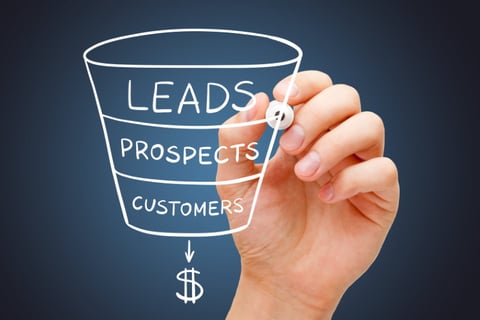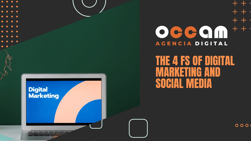Index Content
One of the main objectives of a digital marketing professional is to generate leads, in order to achieve conversions and thus increase profits.
But, do you know what a lead is? If you don't, today we will explain it to you, read on so you don't miss anything!
what is a lead?
This term is widely used in digital marketing and in the Inbound marketing methodology, and is used to refer to those contacts who have left their data. These data are left through forms in exchange for something in return, such as exclusive content, a special offer, discounts, etc. These contacts leave their data voluntarily and become part of your database.
It is important not to lose attention to these leads, as they are users who are considered potential customers, as they are interested in your brand. Once they leave their data, the ideal is to start a nurturing process to keep their attention and finally, convert them into customers.
In order to treat a user as a lead, it is necessary that this person has left their data and accepts the privacy policy, which is important due to data protection regulations.
what types of leads are there?
Now that you know what a lead is, we will tell you what types you can find depending on the phase of the buying cycle in which they are:
- cold Lead is when it is in the first phase, which we call TOFU. It is in the discovery phase and is not yet ready to make a purchase. The user has begun the research process to solve their need or problem.
- marketing Qualified Lead (MQL) or tempered leads, and is the user who is already part of your target audience and has a high probability of becoming a customer. It belongs to the conversion funnel phase called MOFU, where the lead has already entered the consideration part. It has researched and evaluated your company as a possible option.
- sales Qualifiel Lead (SQL) or hot lead, is a user who has already made a decision, so it is in the last phase of the funnel, BOFU, and is ready for sale. It is in this phase where you have to close this sale to convert that lead into a customer.
A lead does not always mean that you are going to generate a conversion. In many cases people leave their details on a form because they are interested in the exclusive content that you were offering them at that moment, even if they are not interested in obtaining more. This does not guarantee that they will end up being a customer. It is a purification process, of all the cold leads, some will become warm leads and of these, a few will become hot leads, and therefore, customers.
This reduction of leads is normal, you can't expect that all the people interested in your company end up buying your products or services. That's why most of the representations are with an inverted triangle.

what to do after capturing a lead?
The beginning of the process starts with the attraction and acquisition of a lead, but to complete it and reach the final objective, that is, to convert them into a customer, it is necessary to carry out a series of techniques.
As you read in the previous point, each type of lead is at a different stage of the buying cycle, so you need to know what stage they are at to better segment them. Apart from knowing what part of the funnel they are in, ask yourself if they are similar to your buyer persona, what type of content they have downloaded and what actions they have taken on your website.
Once you have answered these questions, you will have an idea of what their needs are and you can focus your strategies accordingly. There are two key techniques:
- lead Nurturing: Once the leads become part of your database, it is time to nurture them with valuable content to help them progress through your buyer's journey, that is, to lead them to the sale. Offering the right content at the right time will be fundamental. In this phase you can use marketing automation to facilitate the process.
- lead Scoring: This technique allows you to classify leads to measure their level of interest in your brand and to know if they fit your buyer persona profile. Establishing a good lead scoring strategy will help you to differentiate between contacts with a probability of conversion and those that do not. This technique, thanks to automation, establishes a numerical score for each lead according to the data obtained. It is not 100% accurate, but it is an approximation. Obviously, the more they resemble your buyer persona, the more likely they are to make a purchase.

In conclusion, carrying out an Inbound Marketing strategy involves capturing leads to achieve results. Now you know what a lead is, the types that exist and what to do after capturing leads, but remember that it is important to correctly identify what stage of the funnel they are in in order to approach them correctly, maintain contact and nurture them with the right content.
we hope you liked this article and that we have solved all your doubts!





